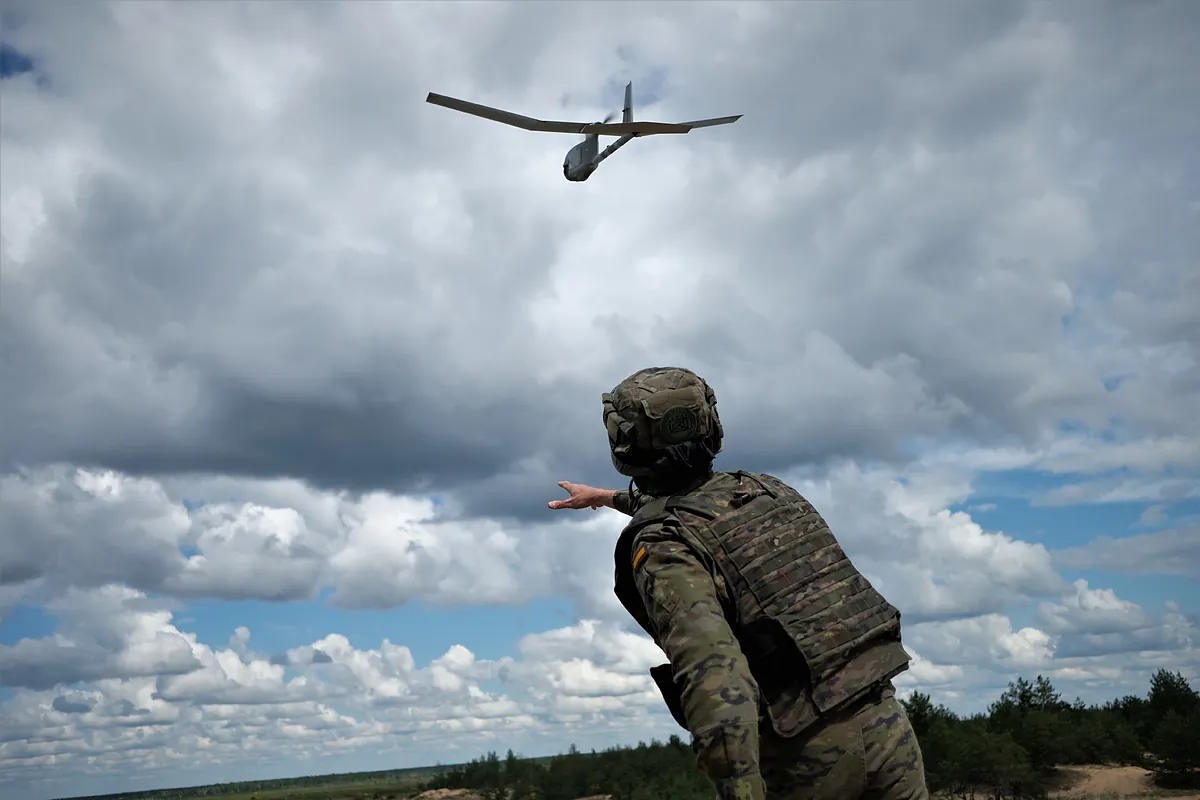Europe aims to build an "anti-drone wall" for its borders with Russia. This is, at least, the name, although details about its construction and basic elements have not been provided. The only existing reference, as a model, is the Ukrainian one, as Israel is a much smaller territory and therefore easier to defend. Thus, they have turned to Volodymyr Zelensky for advice, given the Ukrainian experience, daily and painful, of facing swarms of hundreds of drones of various types combined with cruise and ballistic missiles in nighttime combat.
Is "drone wall" the best way to define it? No, because in the case of Ukraine, there is no such thing, but rather a flexible, mobile, and adaptive defense, which forms layers throughout the territory and waits for its targets on routes predicted by radars. "Drone wall" may just be the name of the idea, but in Ukraine, it is more of a large spider web that achieves success rates between 70% and 90%. Some units are mobile while others are stationary.
Drone hunters have two missions: to shoot down all elements on their way to major cities and to protect valuable targets from those that manage to reach them. For example, power distribution centers, ports like Odesa, and other essential infrastructures are protected by active elements (anti-aircraft artillery and electronic warfare) and passive elements (earth-filled barriers and anti-drone nets). Of course, defenses adapt to Russian strategies, and the Russians modify their tactics based on the success of the defenses, in a stressful cat-and-mouse game that never ends.
The European "drone wall" cannot be static because the threat is not. If the Russians are capable of launching Shahed drones from the Baltic Sea or the North Sea, what sense does a "drone wall" make, for example, on the border of Estonia? At the same time, Europe cannot afford to have 20 drones enter Polish airspace and have to scramble NATO's latest generation fighters to shoot down only three of them.
These are, in broad terms, the systems that Ukraine combines to take down Russian drone swarms:
They are like Mad Max gangs: thousands of pick-up trucks and other civilian vehicles armed with a heavy machine gun in the rear, ranging from powerful 50-millimeter Brownings to World War I Maxim guns, a museum piece that still serves to rain lead on these flying devices. Generally, tracer bullets are used to guide the shot in the dead of night, combined with spotlights. Other units carry Stinger missiles, shoulder-launched or mounted on the vehicle's trailer.
Around valuable targets, Ukraine places its best card: the Gepard anti-aircraft cannons, of which they received over 200 units. It is a German-origin armored vehicle designed during the Cold War on the Leopard tank platform that was already out of service, and whose industry no longer even produced ammunition for that caliber. Despite its age, it has proven to be the most capable system in detecting (with its own radar) and shooting down Russian attack drones. In fact, many of them display white silhouettes of downed drones on the sides of their turrets as trophies. German manufacturers are already working on models to update their capabilities.
Jamming is a fundamental part of the military effort against drones. Systems like the Bukovel-AD block control signals and GPS from drones to neutralize them before they reach their targets, while experimenting with new technologies such as high-power microwaves or lasers to enhance their defensive capacity.
Ukraine combines various types of Soviet legacy radars with modern Western sensors and specific drone counter radars, all integrated into a layered defense network. The S-300 systems from the former USSR and other inherited radars continue to provide long-range surveillance. These are complemented by units like Hensoldt's TRML-4D and Thales' Ground Master radars, delivered to enhance the detection, tracking, and classification of aircraft, cruise missiles, and aerial threats, attempting to distinguish friend from foe. These platforms offer detection capabilities over hundreds of kilometers.
The quadcopters used by Ukraine are small unmanned devices very maneuverable and cost-effective designed to locate, pursue, and collide with kamikaze drones or shoot them down through collision or light armament; they usually carry cameras for human or semi-autonomous guidance, high-discharge batteries for high accelerations and speeds, low-latency link systems, short flight autonomy (minutes), and impact warheads or capture mechanisms. Their advantages are the low cost per unit compared to air-to-air missiles, their agile maneuverability in urban environments, and the possibility of mass production. They have already demonstrated tactical effectiveness in defending urban areas although with limitations in range, altitude, and autonomy compared to larger drones, and their deployment is rapidly scaling up (programs like Sting, VARTA/DroneHunter, and projects supported by Brave1 have transitioned to production and international cooperation). We will soon see many European armies using them.
It seemed like an obsolete system due to its vulnerability on the current battlefield, but Ukraine continues to use them to chase enemy drones. The still powerful Mi24 and Mi8 helicopters owned by Kiev use their cannons to shoot down Shahed drones with relative ease, as the helicopter's speed is still superior to that of the unmanned aircraft.
